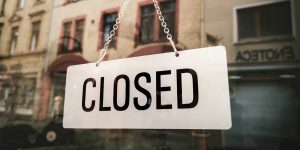We all know that the pandemic and the pandemic-induced recession have left too many small businesses on the brink of failure. As they struggle and fail, cities report staggering local unemployment rates. Almost a year into this economic disaster, few cities have established a strategic recovery plan with tangible, immediate actions to respond to the crisis.
Some cities are placing the burden of responsibility on community organizations, tasking them with the massive challenge of distributing emergency funds to businesses and households. These, often small, organizations have to create platforms, processes, and criteria for allocating the funds quickly, legally, and, hopefully, equitably. Generally, these decisions are not being made strategically.
“Something is better than nothing” as a guiding principle is somewhat understandable as cities struggle with their own budget crisis, cope with a massive public health emergency, and respond to natural disasters and social unrest. But it is these very conditions that make a strategic recovery plan to guide immediate action so essential.
A Proven Approach for Rapid, Strategic Recovery Plans
A strategic recovery plan ensures public resources are allocated effectively and efficiently. But can cities create such a plan quickly, without sacrificing broad stakeholder engagement and community support? Our experience says yes. We share below the approach developed by Bridge Economic Development and the Feeding Cities Group to successfully create the Greater Portland Economic Recovery Plan for the greater Portland region within six months.
- Commit to the Short-Term
Gaining a strong, unrelenting commitment from all parties (e.g., project leaders, advisors, stakeholders, and consultants) to create a strategic plan as quickly as possible, within a hard deadline, is the foundation of our approach. This challenge required finding the most efficient approach for all tasks, which goes against the inclination of public projects for comprehensive scopes and methods. This focus of efficiency requires a lot of trust and the ability to say no repeatedly during the process. It also requires a shared understanding that the recovery plan is only the first step. Instead of waiting to create the ultimate plan to guide a comprehensive, multi-year effort, we focused on a plan to guide immediate actions.
The short-term commitment also extends to the focus of the plan. Recovery from the pandemic may take decades. The goal of the strategic plan is to guide immediate, short-term actions to support the recovery.
- Establish Guiding Values
The direction of the community should be reflected in a set of guiding values for the recovery plan. The values ensure that the priorities and actions will align with longer-term economic recovery and development plans and broad community support for the plan. In Portland, we developed a set of five values that were used to guide the development of the plan as a first step in the process.

- Use Data to Narrow the Lens
The second step in the approach identifies the initial set of priorities for economic recovery. It is important that these priorities are driven by objective and reliable data. We developed a framework that relied on industry risk forecasting, real-time data, and the small business profile of the area (e.g., share by size, industry). Each small business segment will require a different type of support. All insights from the data were validated by local and regional economists and industry focus groups. We also shared all data sources and analysis (as a data appendix) with all stakeholders.
This rigor was also applied to any additional priorities suggested by stakeholders. Ultimately, this objective process forged a set of six priorities that all stakeholders could support.
- Create Purpose-Driven, Inclusive Stakeholder Engagement
A strategic recovery plan anchored in action requires a different approach to stakeholder engagement. We needed not only stakeholder input, but stakeholder ownership. One organization alone cannot effectively respond to the economic crisis. We involved stakeholders through multiple channels: focus groups, individual interviews, and, more formally, an advisory committee. The advisory committee (comprising 74 individuals) included a broad set of organizations (e.g., service providers) that could be leveraged for the recovery, especially those poised to support Black, Indigenous, People of Color (BIPOC) individuals.
Each meeting included facilitated breakout sessions (using a virtual platform) to allow for constructive feedback as well as to identify the actions and critical resources to support the recovery plan.
- Develop a Tactical Action Plan with Ownership and Resources
We worked with city and regional service providers to define immediate actions. The tactical action plan was limited to those actions where a lead organization had come forward and committed to implementing the action (versus just identifying a lead organization that had not committed to action). Without an organization to own and champion a project it will remain a concept on paper. As more actions arise from other regional stakeholders, the Recovery Plan priorities will filter whether the actions are appropriate for the pandemic response as agreed upon by region. As all communities face limited staffing and funds, allocation of these resources must be deliberate. The plan serves as tool to say yes or no to numerous ideas to respond to small business needs. When a new action appropriately aligns with the plan’s priorities, the data and regional support defined in the process are incredibly valuable in preparing grant documents to obtain the necessary funding to implement planned actions.
- Make Implementation Accountable
Greater Portland Inc., the organization that initiated and funded the Greater Portland Economic Recovery Plan, created a dedicated part-time staff position to manage implementation. This person will collaborate with lead organizations to ensure that identified deliverables are provided, metrics are met, and, most importantly, recovery happens—i.e., small business owners and unemployed individuals are receiving critical support.
Make the Move
While every city and region is unique, we firmly believe that this straightforward, strategic approach to economic recovery can help all cities navigate toward more effective, immediate results. More than that, we hope that sharing what we learned from our work with the bold leaders of the greater Portland region will inspire other city leaders to action. Strategic plans are critical and can be developed quickly to better guide immediate actions for equitable economic recovery.


